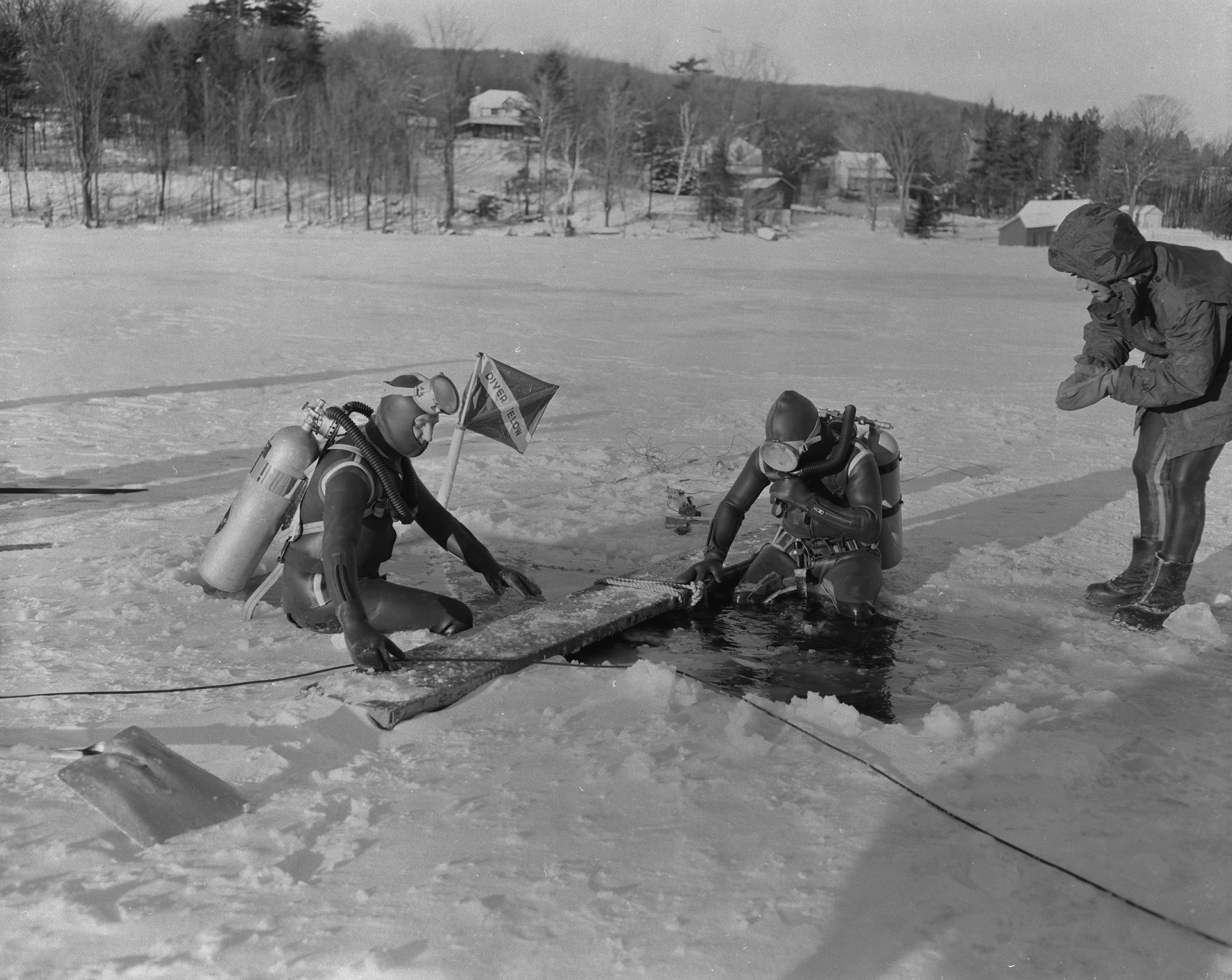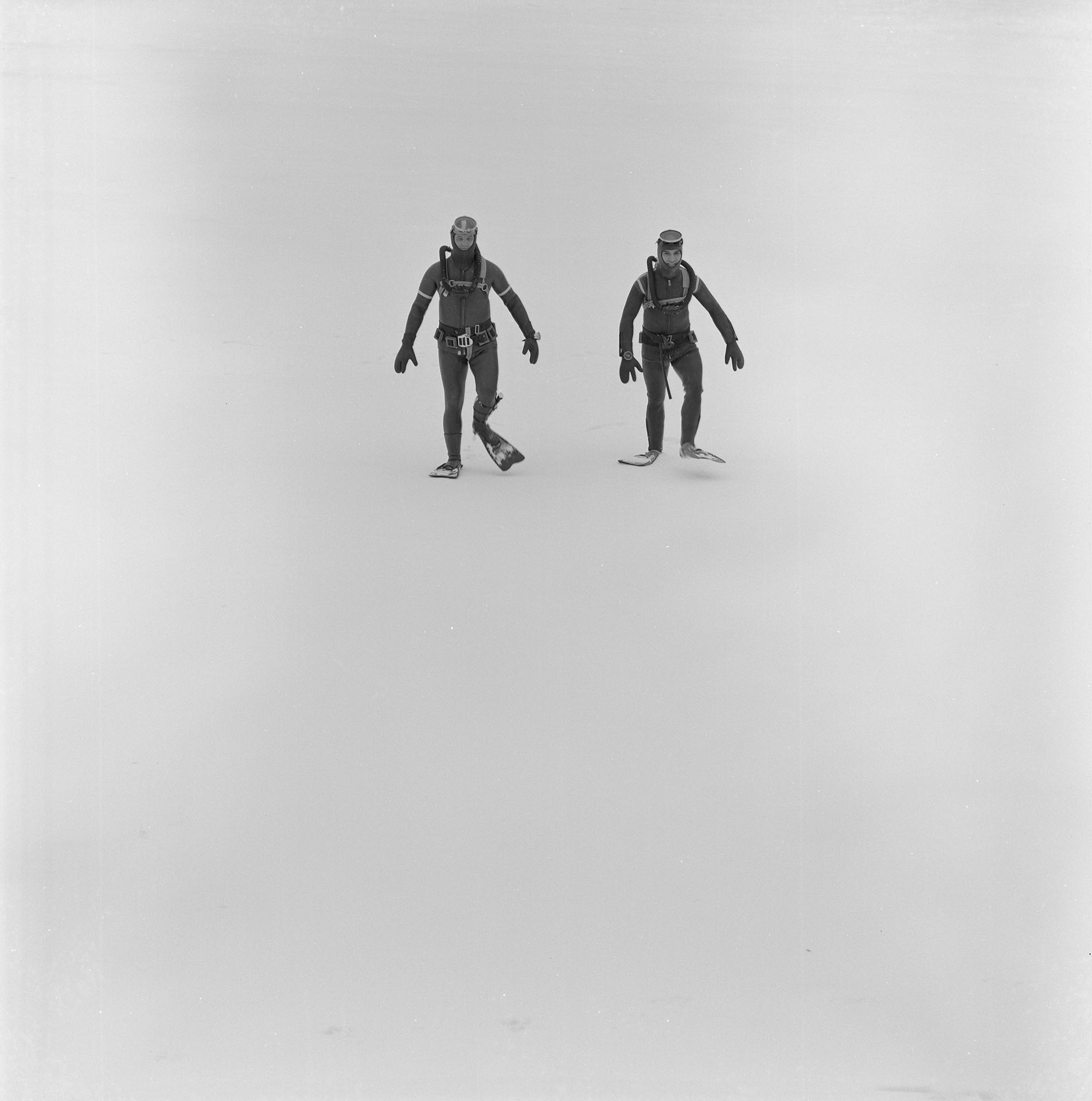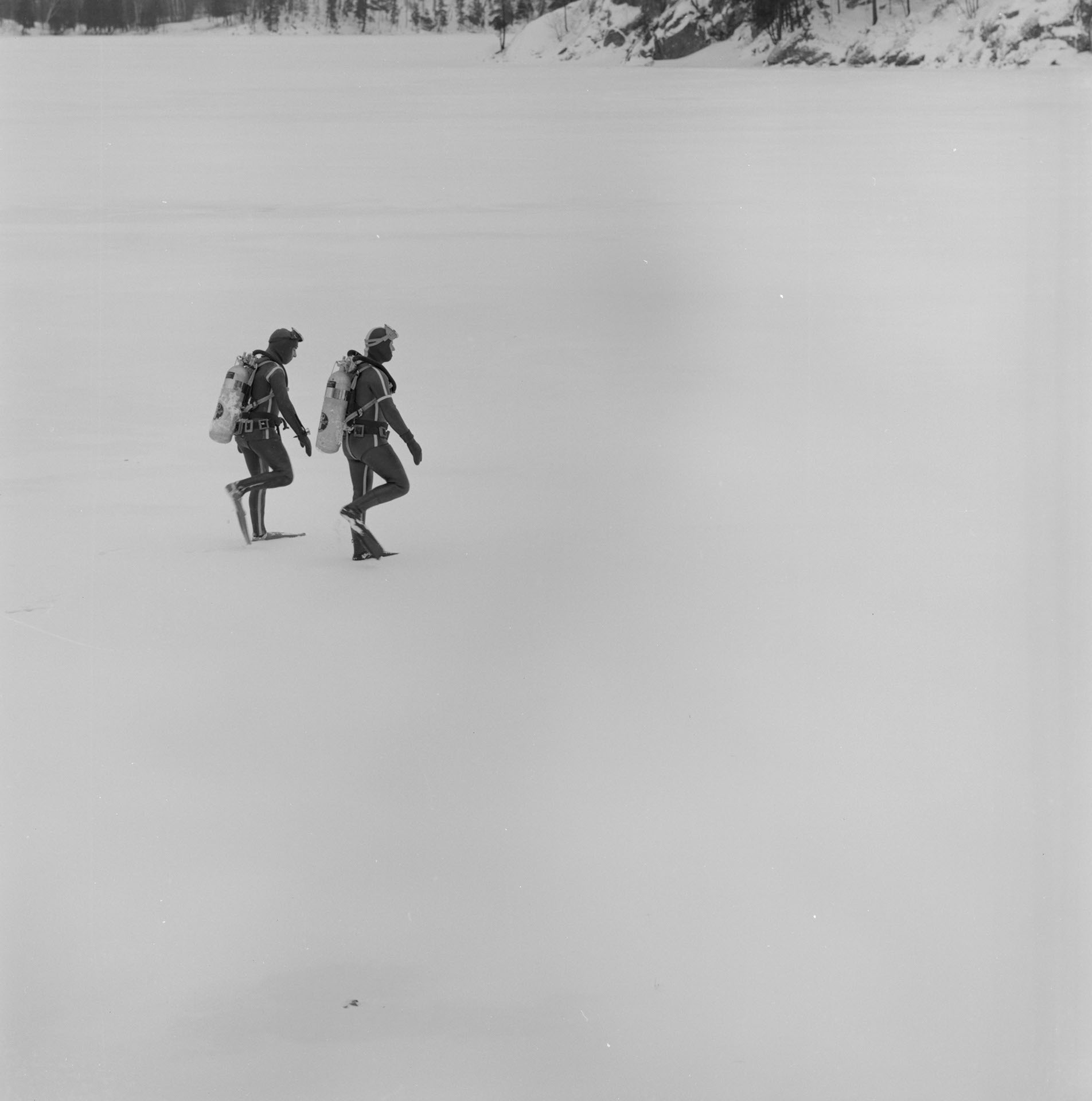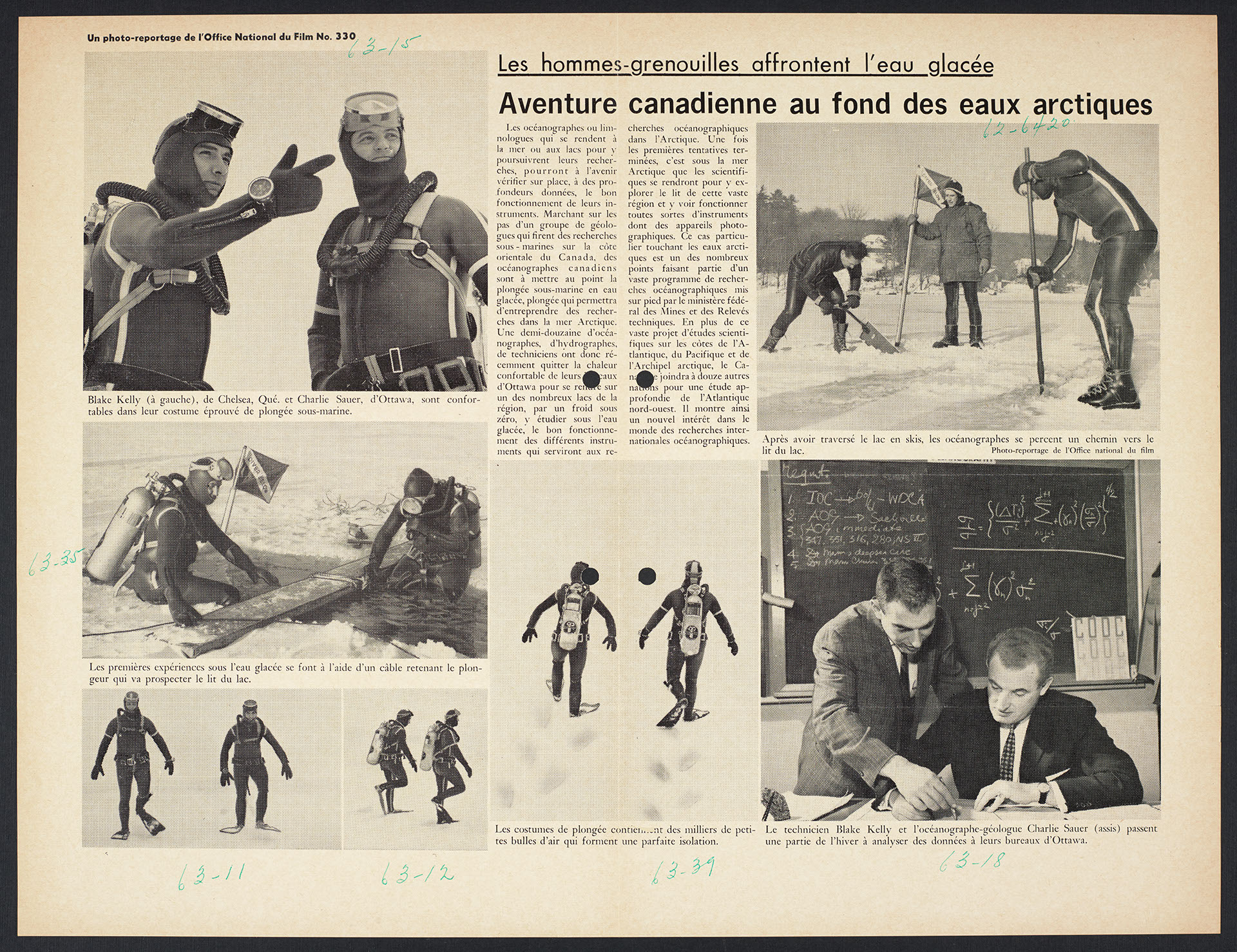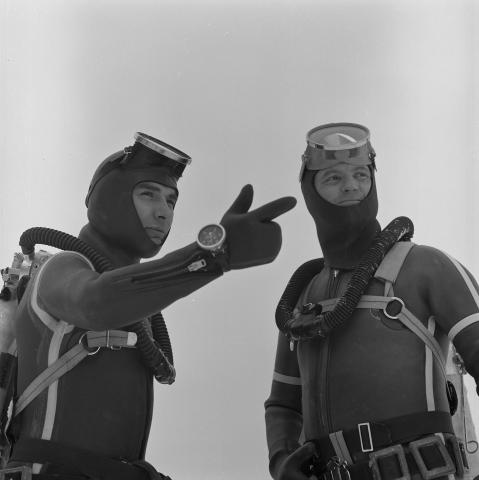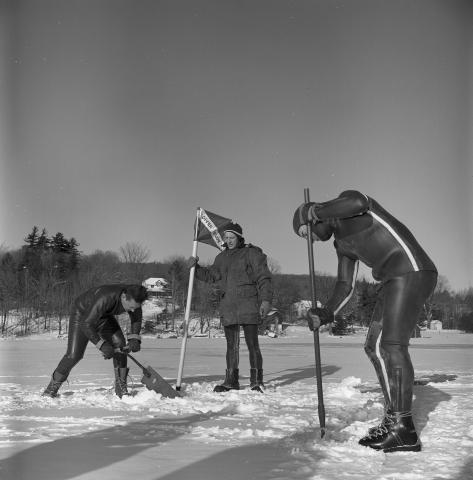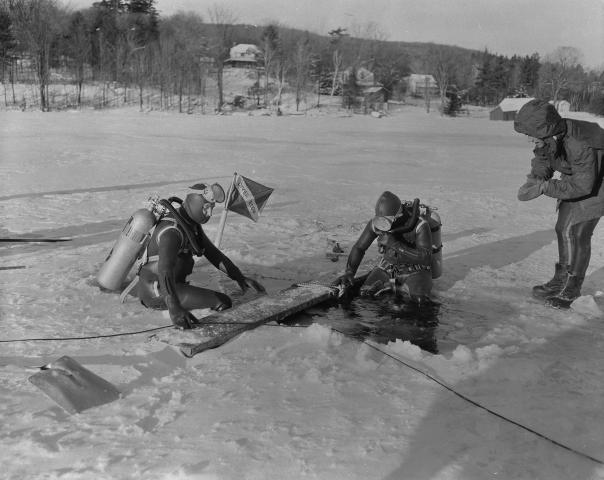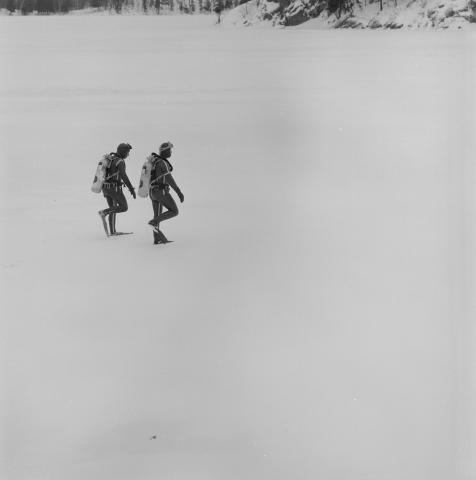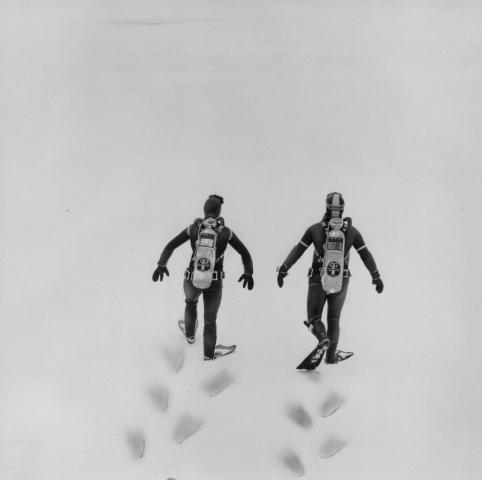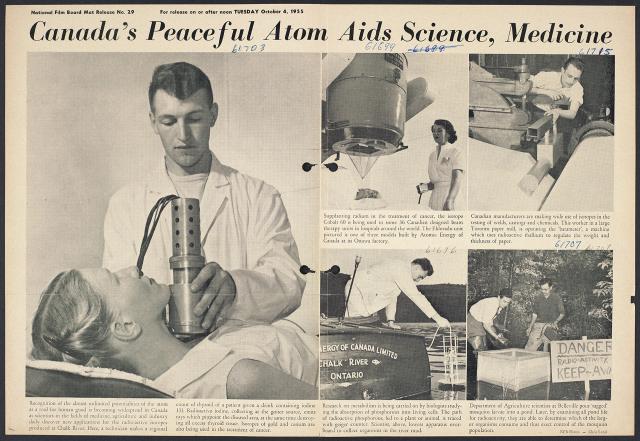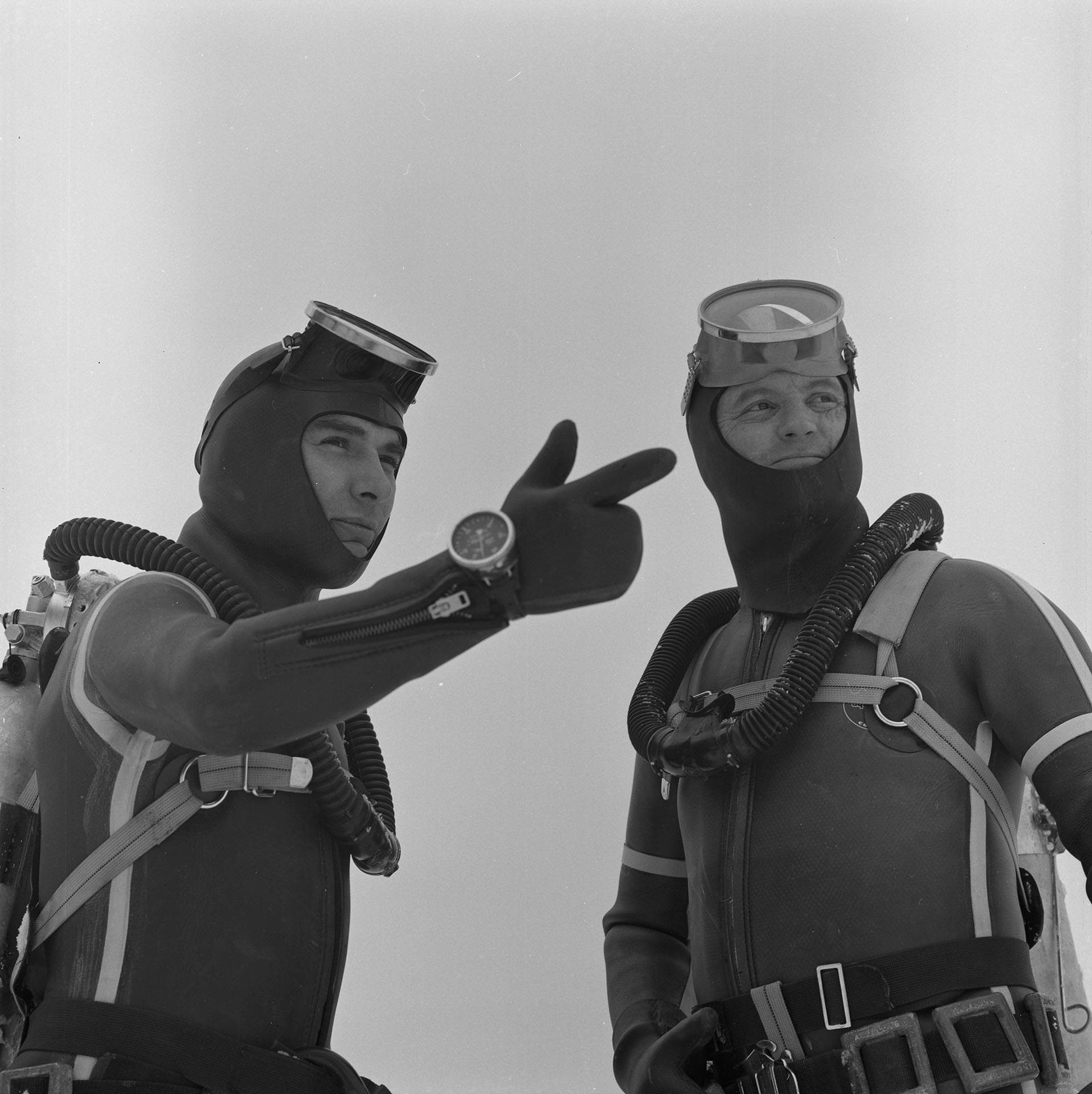
Photostory #330: Scubadivers Study Submarine Scenics: Canadian Oceanographers in Their Element
Photographers
,
,
Maker
National Film Board of Canada
Release Date
February 5, 1963
Collection
CMCP fonds
Credit Line
Canadian Museum of Contemporary Photography fonds, National Gallery of Canada Library and Archives
Main Text
Oceanographers who go down to the sea in ships and pursue scientific studies in Canada's deep and shoal waters will get a closer look at their element in future. Following the lead of geologists who last year made underwater seabed studies off the east coast, a group of Canadian oceanographers are practising skin-diving in icy water in preparation for future research in arctic seas. In sub-zero temperatures half-a-dozen men -- oceanographers, hydrographers, technicians -- leave their warm Ottawa offices to cut holes in frozen lake ice, swim deep into freezing depths and observe, under working conditions, the oceanographic instruments they use in northern research. With safety first, the scientists accustom themselves to ice-cold water and adapt the technique of scuba (self-contained underwater breathing apparatus) diving to the needs of their profession. In future seasons of research work, the skills they learn will pay off in firsthand observations of physical-biological aspects of the ocean floor and the correct functioning of delicate underwater research instruments and cameras. This innovation in Canadian oceanography is but a small part in a growing field of operations. In addition to research programs to gain knowledge of sea areas on Atlantic and Pacific coasts and in the Arctic Archipelago, Canada is joining a dozen other nations in a scientific assault on the Northwestern Atlantic. In this operation Canadian oceanographers are to be responsible for processing and analyzing all the research data obtained -- a proud indication of Canada's international interest in the new science of the sea.
Subjects:


